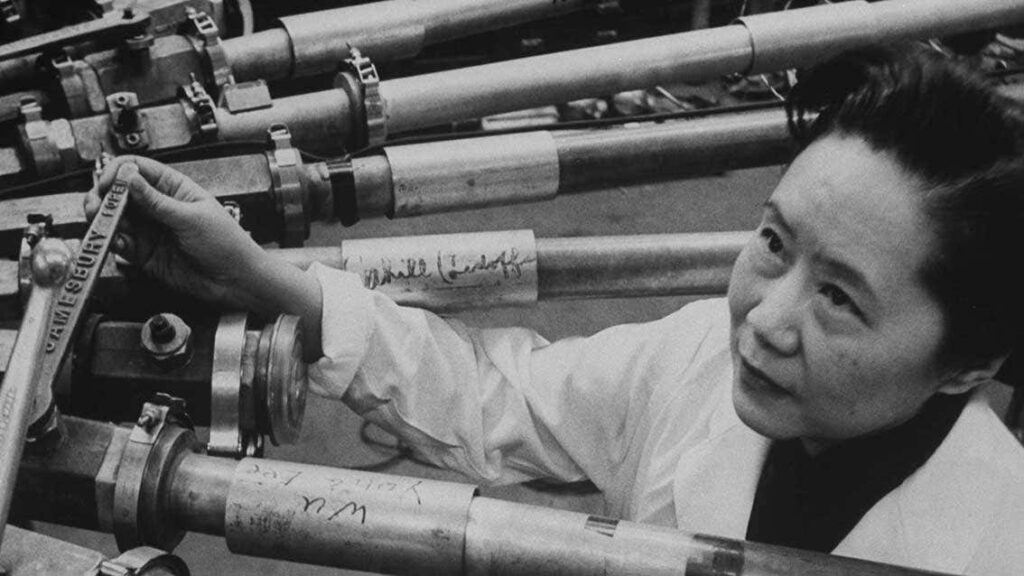Chien-Shiung Wu was a Chinese American physicist with nicknames such as the “First Lady of Physics”, the “Chinese Madame Curie”, and the “Queen of Nuclear Research”. She could also be considered a ‘woman of firsts’: first woman to receive an honorary doctorate from Princeton University, first woman president of the American physical Society, the first female faculty member in the physics department at Princeton, the first tenured physics professor in Columbia University’s history, the first woman to receive the National Medal of Science in Physics, the first person to receive the Wolf Prize in Physics, and the first living scientist to have an asteroid named after her.
Born in Jiangsu province in China in 1912, Wu had a teacher for a mother and father that believed in education for both boys and girls as well as women’s equality. Thus, her childhood was filled with books and learning and encouragement from both of her parents. She attended National Central University (now Nanjing University), and the summer before officially beginning, studied both math and science by herself in order to feel prepared; a habit that would last throughout her life.
While in university she was also a political activist, leading protests and sit-ins regarding the relationship between China and Japan. She majored in physics, and after doing a couple years of graduate work at Zhejiang University, applied to the University of Michigan and went to the U.S., where she would live for the rest of her life, only visiting China again decades later.
After seeing sexist practices in play at the University of Michigan, which included women students not being allowed to enter through the front doors of buildings, she decided to attend Berkeley instead, and earned her PhD in 1940, becoming one of the leading beta decay scientists.
She went on to work on the Manhattan Project, at the Brookhaven National Laboratory, and at Columbia University, and one could literally write whole books about the research she did; I will simply list the topics since my understanding of physics is non-existent: quantum entanglement, beta decay, Baryon asymmetry, weak force and conserved Vector current, among others.
In addition to her scientific achievements, she spoke out against gender discrimination and the massacre in Tiananmen Square in 1989, and was an advocate for the sciences, especially the teaching of STEM subjects to all students regardless of gender.
She managed to do all these things in the face of harsh sexism and racism not only from society in general, but also male scientists who used her work and built upon it, later winning the Nobel Prize with no acknowledgement to her work in the least. She is still considered to be one of the top experimental physicists and is highly regarded in the scientific community. Her list of achievements is stunningly long and includes medals, prizes, honorary professorships, no less than seven honorary degrees, and even a U.S. Postal Service postage stamp.
She passed away in 1997 and her ashes were buried in the courtyard of the school that her father founded for girls, and that she had attended as a child.

